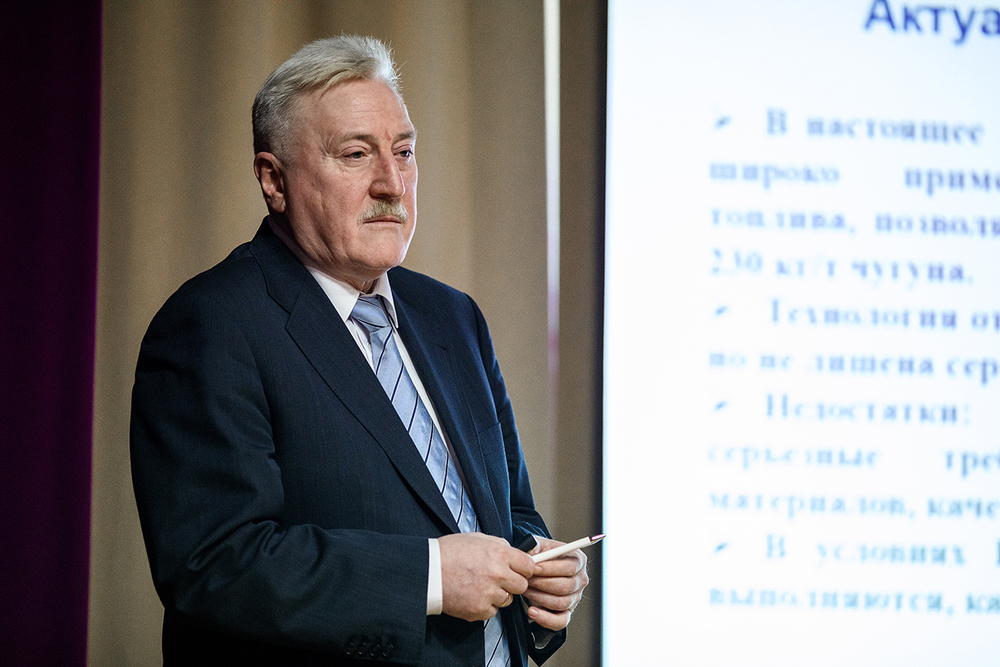More than 95% of the pig iron produced in the world is still produced in blast furnaces. Modern blast furnaces produce thousands of tons of pig iron per day, but they require prepared high-quality raw materials - sinter, pellets and coke. To process iron-containing industrial wastes, of which more than 5 million tons are produced annually at Russian enterprises alone, was either impossible in blast furnaces or technologically and economically inexpedient. But not now ...
In the metallurgy of ferrous and non-ferrous metals, the chemical industry accumulated hundreds of millions of tons of waste in the form of sludge, dust, butt, etc. This waste contains a large amount of metals, the extraction of which is currently not carried out due to the lack of effective industrial technologies for separate extraction of useful components.
"Scientific group of NITU" MISiS "under the leadership of the director of the SEC" IMT "NITU" MISIS ", Ph.D. Gennady Podgorodetsky together with the industrial partner of the University PC “Vtoralyuminprodukt” LLC has built and launched an unparalleled in the world pilot installation of a bubble reactor (based on the principle of gas flushing) for efficient and environmentally friendly production of iron and concentrate non-ferrous metals from waste sludge, said the rector NUST "MISIS" Alevtina Chernikova.
The new innovative furnace of NITU "MISiS" is built on the bubbling principle, while the technological processes are carried out in a liquid slag bath blown by gas. The bubbles formed during this process greatly accelerate chemical processes in the bath, and ferrous melt and slag are intensively mixed.
Gennady Podgorodetsky, the head of the group, says: “We improved the Romelt technology created in MISiS in the 80s, and we divided the reactor into two zones: the smelting and the reduction. Calculations have shown that with such a furnace configuration, it is possible to reduce the consumption of coal and oxygen per ton of produced iron by 20–30%. The slag bath and the bath of ferrous melt are flushed with a stream of gas with an oxygen content of 50–99%. The temperature is maintained at 1400–1500 degrees Celsius. Iron-containing materials, thermal coal, fluxing additives are fed to the surface of the molten bath. Coal falling on the surface of the melt is drawn by slag streams into the lower zones of the bath, where, due to the oxygen stream, it is burned to carbon dioxide and water vapor. Next, the melt flows into the recovery zone, where its final recovery to the pig iron takes place. A number of non-ferrous metals are also reduced to metal, and are removed with exhaust gases from the furnace. Then they are caught in the dust, and form another commodity product - the concentrate of non-ferrous metals. "

The most important advantage of the technologies being developed are low specific energy consumption: 20–30% lower than the world's best counterparts. From this point of view, they can claim the European nomination BAT (Best Available Techniques - the best existing technologies). In general, technologies are initially environmentally oriented. The amount of emissions in them is significantly lower than that of the world's best counterparts; in addition, the technologies provide for the suppression of the formation of especially dangerous ecotoxicants.

“At the request of the customer, the slag composition can be selected for further processing into slag-stone products, heat-insulating slag wool, serve as the basis for the production of cement clinker, etc. Due to the unique design of the unit, the cost of energy can be increased to 500 kg of coal and 500 nm3 of oxygen per 1 ton of pig iron produced. As a result, we recycle waste industrial waste, we get cast iron, commercial slag and non-ferrous metals concentrate. There is no waste in our technology. The pilot sample is also designed to work out the technology of waste-free gasification of numerous carbon-containing wastes, including municipal solid waste, ”said Gennady Podgorodetsky.
The pilot unit, built in Mtsensk of the Oryol region in the territory of ZAO STKOLON MK, is intended for processing of technogenic waste, slags and sludge with the production of pig iron, as well as for the production of generator gases from carbon-containing waste, including solid household waste. The reactor has already aroused the interest of domestic energy companies and manufacturers of ferrous metals.